Insulation Tips
Retrofit Wall Insulation for Existing Homes
A large proportion of Australian homes are under-insulated. Unfortunately, this means many Australians experience uncomfortable indoor temperatures year round and are paying more on their electricity bill than they should be. This is particularly an issue in older homes where wall insulation is missing or has lost its effectiveness. Without adequate wall insulation, you could be losing as much as 25% of your home’s heat in winter and gaining up to 25% more heat in summer.
If your home is uncomfortably cold in winter, unbearably hot in summer and difficult to heat up or cool down, chances are you need to replace your wall insulation. It’s one of the best ways to regulate temperatures effectively, cut your power bill down and do your bit for the environment. Installing insulation in new homes during the construction phase is simple and efficient, but insulation can also be retrofitted in existing homes. If you suspect your wall insulation is missing or isn’t doing its job properly, stay tuned. Below we cover some of the most important factors you need to know to get started retrofitting your home with wall insulation.
Does Your Home Have Wall Insulation?
If your house was built before 2002, then it is unlikely to have external wall insulation. Minimum energy performance standards for detached and semi-detached dwellings were not introduced in Australia until January 2003.
Energy efficiency standards have improved in recent years, however many older homes still lack insulation. While retrofitting ceiling insulation is relatively easy, installing wall insulation in an existing home requires more effort.
What’s the Best Wall Insulation for Existing Homes?
From fibreglass batts to blown-in insulation, spray foam and foil backed insulation – there’s a huge range of insulation types. Below we run through some of the most popular products used in wall retrofit applications.
- Insulation Batts – Insulation batts are a type of bulk insulation which are pre-cut to fit in between the wall joists. They are most commonly made from glasswool (aka fiberglass), polyester and rockwool. Insulation batts tend to be inexpensive, effective and have a high fire rating. Specialised acoustic batts also provide noise reducing effects. If you are living in a home without wall insulation, then your best option is to remove the plaster and install insulation batts in the cavities. Some home owners also insulate their external walls with insulation batts when replacing the external cladding (such as weatherboards).
- Blow-In Glasswool Insulation – Blow-in glasswool insulation requires professional installation, making it an expensive option compared to batts. One positive of blow-in insulation is that it can be installed within 1-2 days and does not require any major renovations. The actual technique required for effective blown-in insulation is also often overlooked. That’s why we recommend hiring a reputable company such as EcoHome Insulation, who uses thermal imaging to verify their work. We also recommend choosing a high quality product such as Knauf Supafil® CarbonPlus.
- Blow-In Cellulose Insulation – As cellulose insulation is manufactured from ground up paper it has a lower fire rating. Overall, this product is quite effective but has a short lifespan and can get blown around leaving gaps between the insulation material. When cellulose settles it can also leave large gaps, making it less effective than blow-in glasswool.
- Spray Foam – Spray foams are more expensive compared to the other options and must be installed by a professional. In general, spray foams have a longer lifespan, are permanent and will not sag or lose their R-value over time. Spray foams come in two forms; open and closed cell structure. Open cell foam has air gaps inside the material and occupies more space per weight. As the foam expands it fills the air spaces and prevents air draughts. Closed-cell foam is more common and denser giving it a higher R-value rating. Retrofitting existing walls with spray foam insulation is very expensive, which is why we generally recommend installing insulation batts.
Video – Blow-In Wall Insulation for Existing Homes
If you are looking to get blow-in insulation installed in Melbourne and the surrounding regions, then we recommend contacting our sister company, EcoHome Insulation. You can view the various techniques for installing blow-in wall insulation in the video below.
Insulation Batts vs Blown-In Insulation
Let’s take a look at how batts stack up against blown-in insulation over a number of categories.
- When to Install – The perfect opportunity for installing wall insulation batts is during a major renovation project or extension with brick-veneer or weatherboard walls. When the wall-lining is not being removed, blown in insulation can be used and the small insulation particles will conform to the cavity space. However, this is generally an expensive way to insulate your walls.
- Ease of Installation – Batt insulation can be installed as a DIY project or by a professional. Batts are easy to handle and come pre-cut to fit in between the wall joists of most Australian homes. For hard to reach or awkward spaces, batts can be easily cut into the right shape. This is by far the most cost-effective way to insulate your home. Blow-in insulation usually requires a professional to install it with specialised equipment. Access to the cavity is gained through lifting tiles above the wall cavity or creating a small hole from the exterior or interior side of the wall.
- Cost – In Australia, batts are a cost-effective option compared to blow-in insulation. Additionally, batts can be installed as a DIY project which can help bring costs down even more.
- Effectiveness – Batts provide excellent resistance to heat flow and also offer acoustic benefits. They come in a wide range of R-Values to suit your needs and budget. Blown-in insulation is also quite effective, providing it is installed correctly. A thermal camera should be used to ensure that the entire cavity has been filled, as wires and pipes can easily block the flow of the material.
- Fire Ratings – Insulation batts generally outshine cellulose blow-in insulation when it comes to fire safety. Cellulose blown-in insulation is manufactured from ground up paper and therefore has a much lower fire rating. Glasswool and Rockwool batts have particularly high fire ratings and won’t produce any toxic smoke in the case of a fire.
How to Retrofit Wall Insulation the Right Way
When it comes down to it, batts offer greater value for money, superior durability and long lasting performance. If you have decided to retrofit wall insulation during a major renovation, batts are the way to go.
During your renovation project when wall cavities are exposed, insulation batts are pressed between the joists and can be strapped into place. It is important that batts are not compressed and that there are no gaps left during installation. Insulation should be shaped and fit behind any electrical and plumbing work and if required, the batts can be trimmed to an appropriate size. A good rule of thumb is to oversize your cut by 10mm to ensure a snug fit. Any off cuts can be used to fill gaps around windows and doors.
If you plan to do the installation yourself, make sure you read up on our DIY guide to ensure the best outcomes. Poorly installed insulation will be less effective. Also make sure you use the necessary safety equipment. Gloves, safety glasses and long sleeves are highly recommended.
Video – Recommended R-Values for Australian Homes
Wall Insulation Batts – Brand Comparison
Pink Batts made by Fletcher Insulation are glasswool insulation batts, made from up to 80% recycled glass material. The new soft touch technology gives the insulation a low-itch feel making it easy to install. They are lightweight and firm batts which keep their shape once installed and have a lifespan of up to 50 years.
Knauf Earthwool is a glasswool insulation product and is the least itchy of the three brands. It is made of 80% recycled glass and has no added formaldehyde. It is odourless, rot proof and does not sustain vermin, thus being an attractive product for older houses.
CSR Bradford has been manufacturing insulation in Australian for over 80 years and has a large variety of insulation products on offer. When properly installed Bradford insulation can be expected to last as long as your home! Choose between Bradford Gold and Bradford Polymax Insulation for your residential build.
When Should I Replace My Wall Insulation?
Adequate wall insulation will make a tangible difference to the temperatures inside your home. Wall Insulation is built to last for years. However insulation that is 10 years or older may need to be checked for damage, mould or rodents. Over time, the R-Value of insulation products may decrease, meaning they will be less effective at resisting the flow of heat. This is usually due to compression, moisture or movement creating gaps in the insulation. Rotting or damaged insulation should be completely removed and new insulation then installed into the area.



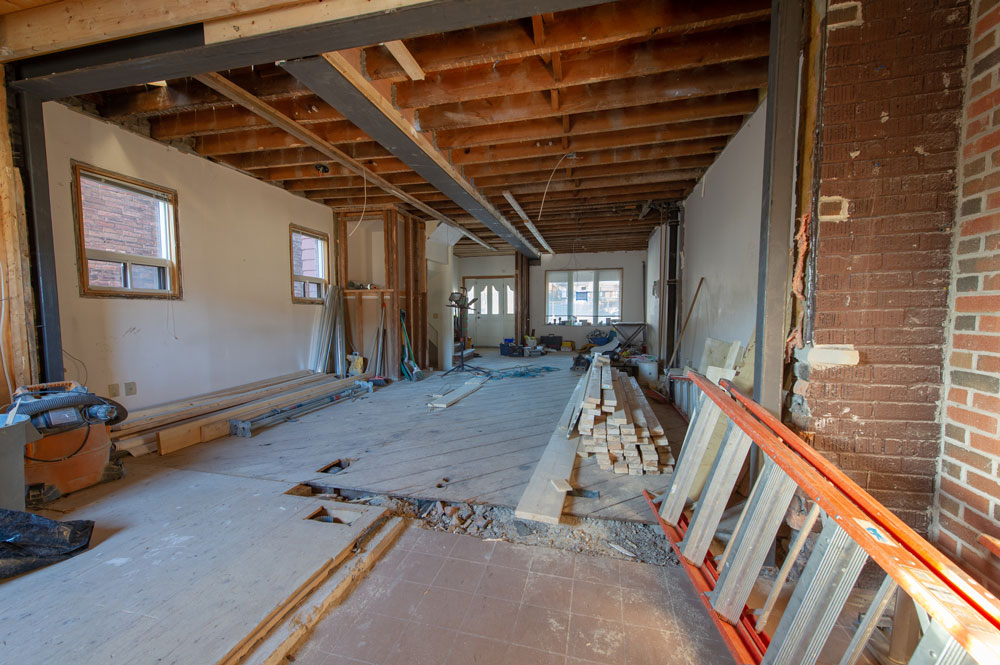
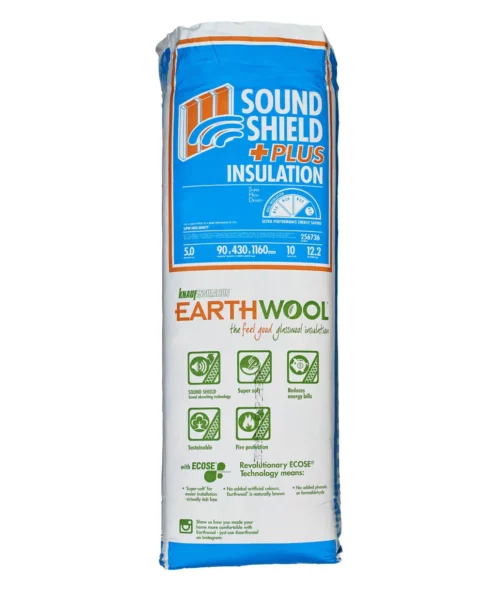
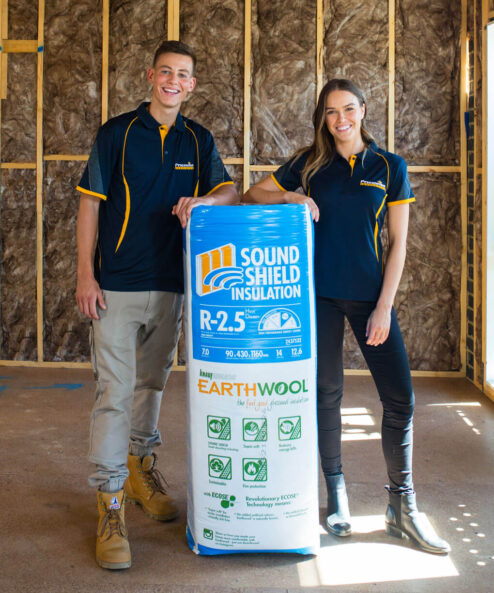
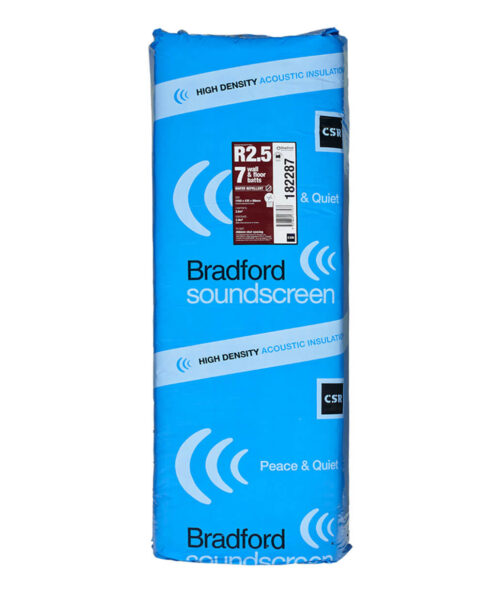
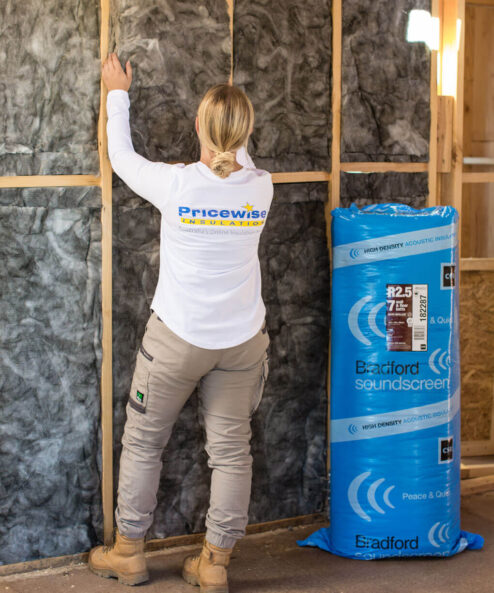
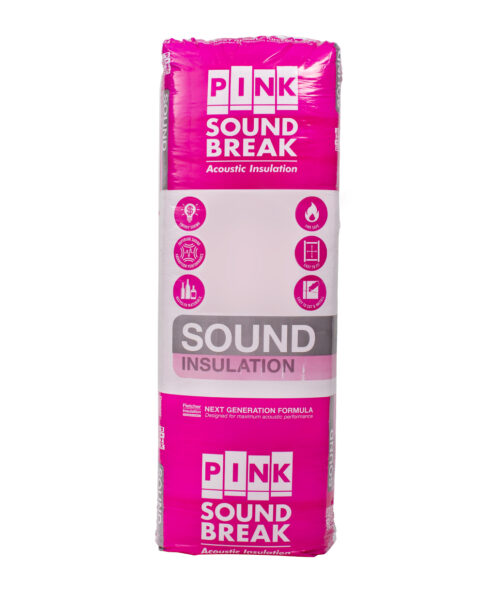
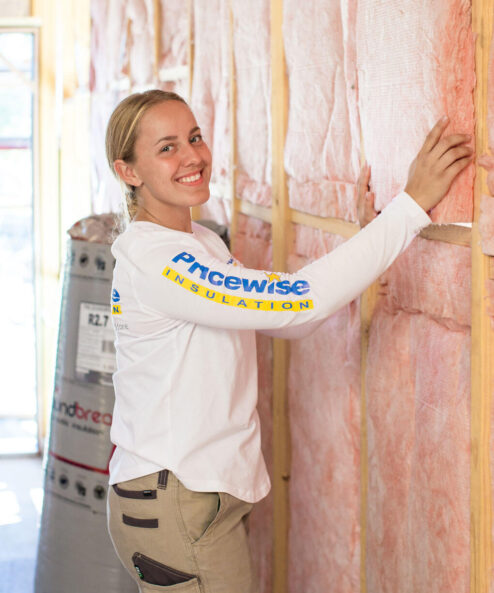
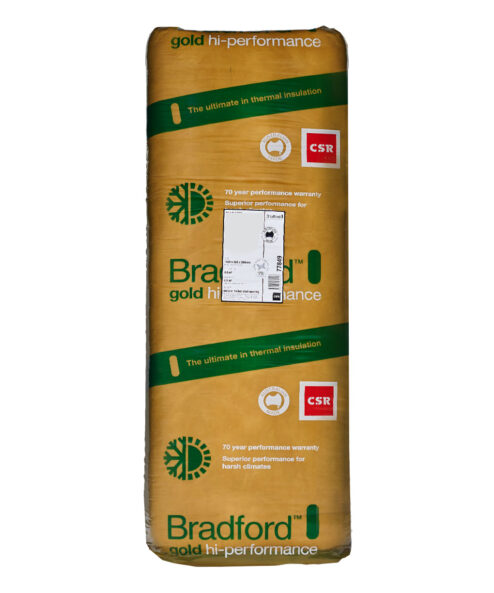
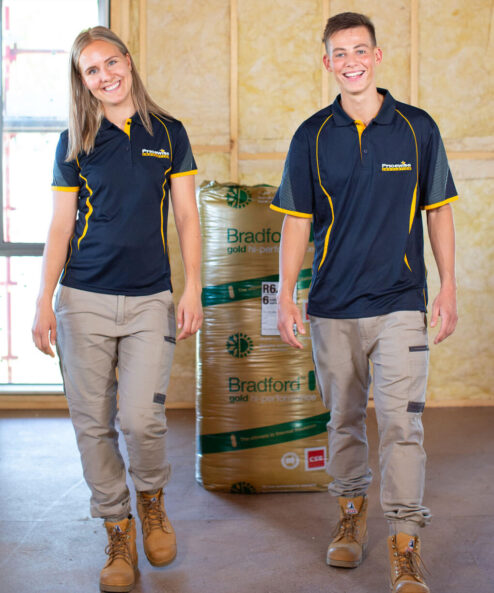
Hi just wondering about blow in insulation to an existing weatherboard please
Hi Sally, insulating existing walls with blow-in insulation is possible, but it is quite expensive. There are only a few companies that offer this service in Australia, including EcoHome Insulation in Melbourne). If you are renovating, then one option is to remove the plasterboard or weatherboards, install R2.5HD Knauf Earthwool Insulation Sound Shield Batts and then install new plaster or weatherboards. We understand that this is not an easy or cheap solution, however once it’s complete the insulation is designed to work effectively for decades. Feel free to give our team a call on 1300 729 639 if you have any questions.
Kind regards,
Christa
Hi
I would like to upgrade my external wall insulation in my existing home without needing to remove plaster walls. My main aim is to reduce traffic noise from outside. Is that possible?
If so is there any concerns and would it affect the wiring in the walls
Also would it void my structural guarantee?
Thanks
Hi Rose,
Thanks for your question! If you have timber cladding on the exterior of your home then this could be removed and the insulation can be installed this way. Another option would be to get the insulation blown into the wall cavities, but this is an expensive option and not so common in Australia. In terms of the structural guarantee, you would need to talk to a builder or engineer about this. Feel free to contact us on 1300 729 639 if you have any questions!
Cheers!
Hi,
In the post above it says blow in cellulose insulation has short life span, would you be able to estimate how long it would last before I have to replace it again. Also, how much would it cost as I am considering insulation for my house walls, which dont have any insulation at the moment and am therefore debating between wall (blow in cellulose) and floor insulation?
Hi Yohann,
We generally recommend that you replace and blow-in insulation that is more than 20-25 years old. Additionally, cellulose blow-in insulation is usually very dusty and inconsistent in thickness and often seen to degrade within 20 years. In this case, we recommend cleaning it out and replacing it with high quality insulation batts, such as Earthwool Insulation.
You may want to consider two options when replacing insulation on your existing home.
– Installing insulation batts will require the removal of plasterboards to reach the wall cavity, however retrofitting underfloor insulation is relatively easy and both insulation batts and rolls are a great option.
– Use blow-in insulation for your walls as this won’t require the plasterboard to be removed. To obtain more information and a quote for blow-in wall insulation, we recommend contacting EcoHome Insulation at sales@ecohome.com.au.
Otherwise please contact our friendly team on 1300 729 639 or email sales@pricewise.com.au and we would be happy to assist you.
Kind Regards,
Liz
Hello, what is the best way to reduce as much noise as possible coming through the internal plasterboard walls I share with the townhouse next to me. I plan on staying here for 5+ years, so want to get a solution to the noise problems I am having!
Hi Chris,
This is a great question. We would recommend removing the plaster from the partition wall and installing R2.7HD Knauf Earthwool Sound Shield Insulation. For added benefits you could also install new soundproofing plaster instead of regular plaster along the partition walls. You could also look at installing R4.0 Sound Shield Insulation in your roof space, as this will help to reduce noise travelling into your townhouse this way. Feel free to contact our team on 1300 729 639 if you have any further questions. Cheers!
You should also investigate noise reducing plasterboard. I recall Boral made this years ago for home theatres.
Hi Stefan,
Thanks for your comment. Combining acoustic insulation with noise reducing plasterboard is a great solution for home theatres.
Cheers!
Our warehouse is too hot .. wall facing sun all day. What can you suggest
Hi Nazhat,
Thanks for your question. The product that we would recommend depends a bit on the type of structure. Is it a concrete or metal warehouse and is there a lot of glass? A product that we most commonly use to retro-fit warehouse is the Kingspan Air-Cell Insuliner. If you have some photos of the warehouse to sales@pricewise.com.au we would be happy to assist you further. Alternatively, feel free to give our team a call on 1300 729 639.
Cheers!
Hi,
I live in an apartment on a main road and although I can hardly hear my neighbours, the traffic noise from outside is quite audible. I have double glazed windows including sliding doors to the balcony that faces the main road. Unsure if it’s the sliding glass doors that need to be upgraded or if I need to insulate my walls. Ideas on how to check?
Hi Jen,
Thanks for your question. If you already have double glazed windows along the side of the house facing the road, I would start by trying to improve the quality of the seals around the windows and doors. This is typically an area where you can get a sound entering the house. You might want to look at taking the architraves off around the doors and windows and sealing those as well to stop noise leakage.
If you have weatherboards or other light weight cladding on the outside of the house, putting insulation in the walls will help with the sound of the traffic, however if your house if brick then insulation won’t make a huge difference. I would suggest that you start with the windows before considering other options.
Kind regards,
Paul
Hi Jen,
Frequently when homes are being energy rated for the building permit, external sliding glass doors are omitted from being double glazed, due to weight and cost, so check that you door is double glazed too, but all of what Paul said is valid also.
Can you recommend 3 companies for quotes to retrofit a weather board house cavity walls with blow in insulation please.
Hi Wendy,
This really depends on where you are located in Australia. The company that we recommend in Melbourne is EcoHome Insulation.
Kind regards,
Christa
Our house in North Western Sydney was built in 1999. It doesn’t have any kind of insulation (sarking, ceiling and wall). Can you please suggest some ideas to insulate our house? Does the foil insulation underneath the tiles (without removing the tiling) help? I am planning to install ceiling insulation. What should be the R value. I believe the wall insulation is nearly impossible without removing the plaster board. Thanks.
Hello George,
For the roof space, we recommend installing R4.0 ceiling insulation or higher. For the best thermal results we would recommend R5.0 or R6.0 ceiling insulation in Sydney. Installing a sarking product such as Kingspan Air-Cell Insuliner is an effective way to help reduce radiant heat. Where possible, we recommend a combination of bulk insulation batts and roof sarking or blanket.
You can look for a company in Sydney that installs blow-in wall insulation, however this is generally quite an expensive option. Alternatively, you can remove the internal plasterboards and install wall insulation batts. The best time to do this is during building or renovation projects. Feel free to give our team a call on 1300 729 639 if you have any further questions.
We have 25 years old modern brick veneer double story home which we built. How can we insulate our walls? We plan to live here for another 20 years. What options we have?
Hi Jay,
Thanks for your question. Insulating walls in an existing home is never easy, especially in Australia where blow-in wall insulation is both uncommon and very expensive. Basically your best option would be to remove the plasterboard, install R2.5HD Earthwool Sound Shield Wall Insulation and then install new plaster. The best time to do this would be during renovations when all the furniture and other items have been removed. We hope this helps! Feel free to contact us on 1300 729 639 if you have any further questions. Cheers!
We are renovating our 1930’s-40’s? house and whilst in the process of removing the old horse hair plaster and replacing it with gyprock we are going to retrofit the external walls with some Bradford polymax R2.5 wall batts, the thing is with the recent continuous wet weather we are having in Northern NSW we have noticed quite a lot of wet areas (from the inside) on the external timber cladding, should we be trying to put some sort of barrier between the timber cladding and the polyester batts?
Hi Mary-Ann,
Thank you for your question. If you are noticing that wet areas on the inside of the cladding I would suggest that you retrofit a vapour permeable membrane (eg Ametalin Brane VHP) to the inside of the frame before you install the batts. Just make sure that the wrap is installed with the print facing the cladding so that it performs its function as water barrier properly. Feel free to give us a call on 1300 729 639 if you have any further questions. Cheers!
Great article! Thanks for posting this. Well informative
Hi, we have a 70s brick house. The main bedroom is south facing with 3 external walls, all with no wall insulation. I’m assuming the best way to insulate the walls is to remove the Gyprock, insulate and re-gyprock the wall? Please confirm. As an alternative, we are looking at cladding the house. Can the insulation be added between the cladding and external brick instead?
Hi David,
Thanks for your question. The easiest option would be to remove the plasterboard, install wall insulation and then replace the plasterboard. Installing insulation between the bricks and cladding is also an option, however this install method is prone to moisture issues and you will need to take care to maintain sufficient air gaps. If you are seriously considering this second install option, then we would recommend talking to one of our insulation specialists first. Please give us a call on 1300 729 639 during business hours.
Cheers,
Christa
What is the price difference in retrofit blow in insulation and removing internal plasterboard putting in batts then replacing plasterboard? Just use the example of 7m long wall by 2.3m high.
Hi Amanda,
Thanks for your question. To retrofit blow-in wall insulation costs about $50 per m2 in Melbourne, Australia. By comparison R2.5 thermal and acoustic wall insulation batts cost around $8 per m2, plus the cost of the new plasterboard. Removing the existing plaster and installing new insulation batts and plaster would work out considerably cheaper than blow-in wall insulation.
Wall insulation batts also offer a higher thermal and acoustic performance than blow-in insulation, due to their higher densities. Feel free to give our team a call on 1300 729 639 if you have any further questions.
Cheers,
Christa
Hi
My home is built in 2015 and based on the house plans it seems the builder had put in a foil insulation sheet in the wall cavities. I had asked two companies to come provide me with a quote.
1) company 1, blow in wool, drill into wall to pump in, said that it would not be possible with my home as I already have foil insulation between the cavity walls.
2) company 2. Polystyrene balls, pumped in through roof by removing roof tile. I advised them about the foil insulation between the cavity walls and they said there balls would not affect it.
When I was doing some reading, it said that if anything touches the foil insulation it deems them as negligible and do not provide any insulation anymore.
I would really like your advice, my house feels cold and I was really keen to get some insulation between the wall cavities but now I’m not sure if it will be possible or any value added?
I am in Perth WA
Thanking you for your time 🙂
Michelle
Hi Michelle,
What you mentioned about the foil losing its R-value when other insulation is installed against it is correct. Foil insulation does require a reflective air cavity for it achieve its stated R-value.
However, by filling the cavity with bulk insulation you will most likely end with with a higher total R-value for the wall. Your walls are currently around an R1.0 to R1.5. Filling the wall cavity with a blow in insulation such as the Knauf Jetstream will help you achieve an overall R-value of R2.5 to R3.0.
There are a few other things that you could do to improve the energy efficiency of your home, including installing some extra ceiling insulation and sealing gaps around your doors, windows and other gaps around the house. Feel free to give our team a call on 1300 729 639 if you have any further questions.
Cheers,
Paul
Hi, I live in 3 bedroom concrete house, with wooden floor boards for flooring. About 1.2m off the ground. We have done some rendering on the outside for insulation. But still absolutely freezing. Concrete interior walls are ice blocks
Hi Teresa,
Thanks for your comment. Do you have timber joists or is it a concrete floor beneath the floor boards? If you have timber joists then recommend installing R2.5 Autex GreenStuf Underfloor Insulation (only available in Victoria) or an equivalent polyester product in other states.
When rendering did you first install foam on the outside? Concrete is generally quite a poor insulator. You could potentially build timber framing and install insulation batts to the internal walls. Alternatively, you could install Kingspan K17 Insulated Plasterboards on your internal walls.
Cheers,
Christa
Hi there
we are currently doing renovations on our 100 year old weather-board cottage. We have fully removed all the interior linings. None of the walls in the house were insulated nor the external walls wrapped with vapor / moisture barrier. We are about to start renovations and due to costs we want to retain all the existing FC-weatherboards. Is it possible to retro-fit a moisture wall wrap from the inside (without removing the weatherboards) then insulate with batts? Does cutting or breaking the moister barrier make the wall wrap defective? Alternatively can you suggest a 2-in-1 product which insulates and creates a moisture / vapor barrier AND installed from the inside for stud walls?
Hi Madison,
Thanks for your comment. You can use a vapour permeable wrap and cut it to 50mm wider than the spacing between the joists. This can then be stapled to the joist on either side of the spacing. The insulation batts would then be installed in front of this permeable wall wrap.
You will need to make sure that the printed side of the wrap (with the logos) is facing the existing weatherboards. It’s obviously better to install the wall wrap from the outside to create a proper seal, but this is better than nothing.
Cheers,
Christa
Hi, How can I reduce noise from guest toilet which backs onto lounge.
Hi Sharon,
Thanks for your question. One option would be to remove the plaster and install R2.7 Knauf Earthwool SoundShield Insulation (or an equivalent product) and then replaster the wall between the guest toilet and lounge.
Feel free to give our team a call on 1300 729 639 if you have any further questions.
Cheers,
Christa
I bought an existing prop in Sydney Norwest (best guess it was built in early 90’s with not high grade insulation materials).
The house gets too hot and too cold, when I looked at the roof insulation it wasn’t in good shape either which tells why the hot/cold is happening. The cost to vacuum existing insulation is more than the cost of new / apply R5-6 grade insulation. I am thinking of doing a DIY by applying high quality roof insulation R5-6 and wanted to check:
1. Can I apply the R5-6 grade insulation on top of existing one, it may also cover the joists, existing wiring etc, is it safe ? If its all good can you please suggest a good product to apply on top of existing insulation.
2. Some part of the roof tiles have silver foil insulation material (from inside the roof tile) but not the entire roof tiles were covered by that material. I am wondering what are the adv / dis adv of having / not having it.
If I have to cover the entire roof tile with foil insulation how to do that and whats the best product, also confused how would the new foil insulation stick from inside as I believe the right way of doing is to take off all the roof tiles, put the new silver foil insulation blanket and redo the tiles ? is there an easy way of doing it without removing the tiles 🙂
any tips / recommendation is highly appreciated. Thanks in advance
Hi Syed,
Thanks for your question. We have created a video which explains what to check for before buying roofing insulation in Australia: https://www.youtube.com/watch?v=Ki3m5f9gaIU. The first thing you want to check is the quality of the existing insulation. If the existing insulation is in a dry and clean condition, then we typically recommend topping this up with a layer of R4.0 or R5.0 ceiling insulation batts (in Sydney).
If you are unsure about the wiring then you could get it checked by an electrician prior to installing insulation. It’s best to cut the insulation to size so that it fits snugly between the joists. The only instance that we would recommend installing insulation on top of the joists is if the existing insulation already reaches the top of the joists. In this instance we would recommend installing the new insulation in the opposite direction. You can watch our video on how to install roof insulation here: https://www.youtube.com/watch?v=AQSkC4RJjhA.
The purpose of the foil insulation under the roof tiles is to reflect the heat of the sun. You could consider installing Kingspan Air-Cell Insuliner Insulation by stapling it to the underside of the timber rafters. This way you wouldn’t need to remove the roof tiles.
Feel free to give our team a call on 1300 729 639 if you have any further questions.
Cheers,
Christa
Interested in your thoughts on Supafil Carbon Plus for existing external walls? After reading about the paper type blow in insulation, I’m not keen on that now.
Hi Jen,
Knauf Supafil Carbon Plus is a high quality glasswool product that achieve ratings of up to R2.7 in existing external walls. Our sister company, EcoHome Insulation installs this product and would be happy to answer any of your questions.
Cheers,
Christa
Hiya Guys
Ive been trying to work out how to insulate the walls on a 120yr old house in Rural Victoria. The weatherboards have just been painted and I really dont want to pop them off but the rooms need some insulation in the walls. I have a couple of questions and would love any suggestion you have.
1. Im not sure if I need a moisture/vapour barrier or if I can just use the Bats or if there is a combination product that may be useful. I not above you have suggested use a vapour wrap and staple it the Joists and maybe thats the way forward here. Im just preparing to take the plaster board off to see what I may find!
2. It regularly gets to sub zero temperatures here, what Insulation would you suggest?
Thanks heaps
Baz
Hi Baz,
You can install staple a vapour barrier from the inside by cutting the rolls down to slightly wider than the opening. The other option would be to pump insulation into the walls. The blow-in insulation has got a coating which stops it from absorbing moisture and can achieve up to an R2.7 in a weatherboard home. To obtain a quote for blow-in wall insulation, we recommend contacting EcoHome Insulation at sales@ecohome.com.au.
Feel free to give our team a call on 1300 729 639 if you have any further questions.
Cheers,
Christa
1930s timber-stud hair-plaster + fibro or weatherboard walls, NOT insulated.
What is most-economical + best R-Value insulation?
Hi Ross,
Thanks for your question. Are you intending to remove the hair-plaster or weatherboards? If so, then we would recommend installing R2.5HD Earthwool Sound Shield Insulation or an equivalent product. R2.0 wall insulation is a more cost effective option, but if you’re going to the effort of replacing the plasterboard then we would definitely recommend installing R2.5 wall insulation batts. These high density (HD) insulation batts offer both thermal and acoustic benefits and will not sag over time.
Another option for your project might be blow-in wall insulation. If you live in Melbourne, then we recommend a company called EcoHome Insulation. Blow-in wall insulation is fairly costly, but it’s an effective way to install insulation in existing walls without the need for major renovations.
Please feel free to give our team a call on 1300 729 639 if you have any further questions.
Kind regards,
Christa
I have a 1959 fibro (asbestos) house in Central Qld. I had ceiling insulation put in when the roof was replaced. Now I am looking at pulling out the interior wall lining and putting in insulation and re-lining with cement sheet (non-asbestos). Doing one room at a time. What batts would be best to use and do I need a moisture barrier before I put in the batts? Thanks.
Hi Kim,
Thanks for your question. If it’s the external cladding that you are removing, then we would recommend that you remove the cladding, install the insulation batts and then install the wrap. You could even consider using Kingspan Air-Cell Insulation product, then installing 20mm battens, followed by the cement sheet. This will give you a better overall performance.
Please don’t hesitate to contact our team on 1300 729 639 if you have any further questions.
Kind regards,
Christa
HI, I have just purchased a steel framed prefab house the insulation is not great if it even exists, builders have told me it’s not possible to take off the wall panels so how could I add insulation to both internal and external walls.? I want to insulate against heat and sounds.
Hi Sandra,
Thanks for your comment. It sounds like your only options are to either remove the wall panels or hire a professional to install blow-in wall insulation. This is quite an expensive process, which is why we encourage our customers to install insulation batts while building or renovating. The company that we recommend in Melbourne for blow-in wall insulation is EcoHome Insulation.
Please don’t hesitate to contact our team on 1300 729 639 if you have any further questions.
Kind regards,
Christa
Hello, we’ve got an old 1960s weatherboard house based in Brisbane. We’ve recently removed the wall cladding and want to insulate the external walls. What I’m unsure about is whether I should a) make sure there’s an air gap between the insulation and weatherboard? b) should we try retrofit a vapour barrier by stapling to the studs (so without removing the weatherboard) with a10 – 20mm airgap and then install batts? I’m mainly concerned about if condensation is an issue if we were just to put batts right up against the exterior walls or if that’s totally fine? Thank you!
Hi Emma,
Thanks for your questions, below are our responses:
a) You need to leave an air gap between weatherboards and the insulation batts.
b) In order to properly retrofit a vapour permeable wall wrap, you will need to remove the weatherboards and staple the wrap to the outside of the frame.
You do not need to worry about condensation if you have properly installed a vapour permeable wrap and leave an air gap for the insulation batts. Feel free to give our team a call on 1300 729 639 if you have any further questions.
Thanks for all the great info here. We want to retrofit a hardiplank garage, hardwood frame, insulating the walls before lining. We have bought a batch of Bradford gold wall batts to get us started.
Is there a paint-on option for waterproofing before installing the batts?
Is it possible to cut and fit something like Ametalin Brane VHP to between the wall studs? We want to avoid removing the cladding. Do we need to ensure the air barrier on a job like this? Newcastle area.
thanks!
Hi Maz,
Thanks for your question!
The role of the vapour permeable wrap is to stop any water coming in but at the same time, allowing moisture build up from inside to get outside. I’m not aware of a paint that fulfills this function but we are no paint experts. Retrofitting Ametalin Brane VHP or any other class 4 vapour permeable wrap is a good option as it is vapour permeable and at the same time a water barrier.
While removing the cladding would allow you to get the best result with regards to the install of the wrap, the wrap can certainly be retrofitted. To retrofit the product, cut the roll of wrap approx. 5cm wider than the stud opening. This will give you a couple of cm’s of overlap that you can staple to the inside of the studs. Use a suitable tape to seal overlaps and any other holes.
For a renovation like this, your plasterboard will act as the air barrier. To maximise the thermal and acoustic performance of the insulation, make sure all small gaps are filled including around windows, doors and junctions where air leakage is most likely to occur. Make sure that whole cavity is filled with insulation and that it is flush with the front of the studs.
Hope this helps, and best of luck with your project!
I have a 2000 metal framed transportable house in central Australia. we have dry cold winter nights and hot dry summers.
The house has little insulation in walls (a thin wafer of pink batt is evident), and clad with weathertex. It recently had r2,5 pink batts installed (appears between the metal trusses) in ceiling. The floor is elevated, 19mmm yellow tonguefloor sitting on 150mm C channel. Where do I start? and with what?
.
Hi Tracy,
Thanks for your comment!
Based on your description, it appears that there is some insulation in the ceiling, but additional insulation may be beneficial. Considering that the ceiling contributes to approximately 35-40% of heat loss and gain in a home, topping up the insulation would likely be the most cost-effective and straightforward solution to enhance your home’s thermal efficiency.
Additionally, installing floor insulation can further improve insulation effectiveness. To determine the appropriate insulation product for your floor, it’s essential to consider the spacing between the floor joists. One recommended product for steel frame subfloors is Kingspan Permifloor, which can be easily installed using double-sided insulation tape.
Lastly, addressing wall insulation is crucial for comprehensive thermal performance. Installing Knauf Carbon Plus or another suitable blow-in insulation into your walls can significantly enhance insulation levels. If you plan to reclad your house in the future, this would be an ideal opportunity to insulate the walls using high-density Glasswool batts and a vapor-permeable wall wrap for optimal results.
I am planning a renevation of a 1920’s weatherboard home. After reblocking the home we will need to replace the external weatherboards. I am hoping to leave the plasterboard walls as is. To improve the thermal rating and reduce noise I am thinking of using Knauf Earthwool Sound Shield wall batts. Could I then also install Foilboard Green Rigid Insulation panels on the exterior walls and then clad over the top? Is that overkill? What is the normal Foilboard residential thickness when used under cladding?
There are three windows on the wall however they all need to be replaced so the additional thickness should not be an issue on that front. There are no other openings on the wall.
Hi Andrew,
Thanks for your comment! For your 1920’s weatherboard home, we suggest installing R2.5HD Earthwool Sound Shield Insulation along with a vapor-permeable wall wrap like Masons Building Wrap, Watergate Plus, or Bradford Enviroseal. This combination will enhance insulation while allowing for proper moisture management.
Regarding your question about using Foilboard Green Rigid Insulation panels on the exterior walls, it could potentially be beneficial, especially if you’re aiming for maximum thermal efficiency. However, it’s essential to ensure that the additional thickness won’t pose any issues with window replacement or cladding.
The typical residential thickness for Foilboard under cladding varies, but a standard thickness should be fine for your application.
If you have any further questions, please reach out to our team on 1300 729 639. We’re happy to help!
We have a double brick, rendered, 1930’s home with a 2 storey extension built in the mid 80’s. The upper level is timber frame with external fibro-cement-like cladding, and seem to have little or no insulation. We are planning to replace most the upper level windows, and would like to add an insulation layer of cladding to the EXTERNAL walls. Is this possible?
Hi Helen,
If the house was built in the 80s, there’s a good chance the external walls aren’t insulated. You have two options:
1. If you’re planning to install new cladding, we recommend removing the existing cladding, installing high-performance insulation batts like the Earthwool R2.5HD Sound Sheild, then adding a vapour permeable wrap such as the Ametalin BraneVHP before putting up the new cladding.
2. If new cladding isn’t an option, consider having insulation blown into the wall cavity. We collaborate with several companies across Australia that specialise in blown-in insulation.
Feel free to contact us if you’d like a referral or require any further assistance. 1300 729 639
Hi,
I’m planning to renovate a 1968 brick veneer house and would like to insulate all external walls.
What product would you advise to use if the house is not wrapped in sarking?
Hi Jack,
Thanks for your comment!
If you plan to remove the plasterboard during the renovation, you can install batts between the studs even if there is no sarking behind them. However, we recommend installing some poly strapping behind the batts to prevent them from touching the brickwork.
If you’re not removing the plasterboard but still want to insulate the walls, please contact our sales team sales@pricewise.com.au, and we can recommend a local specialist wall blow-in installer.
Hi,
I need to retro fit a good acoustic(sound) insulation to three internal walls of a small second bedroom.
Is there a blow-in insulation that will provide sound deadening?
If there is what is it and how much does it cost per square meter?
How long does it take to do the Job?
Cheers
Ron
Hi Ron,
Thanks for your question!
Which state are you located in? We collaborate with several recommended installers who specialise in blow-in insulation for existing walls and can connect you with one in your area.
Installing blow-in glasswool insulation in your internal walls will significantly improve soundproofing. Additionally, you might consider adding an extra layer of plasterboard after the insulation is installed. This combination can dramatically enhance the acoustic performance of your internal walls.
Hello,
My house has no wall insulation in the ground floor while the first floor extension has. Is it possible to add an extra timber framing on the inside along all the external walls, fill them with pink batts or earth wool or csr batts and then finish off with new plaster boards? I know I will be loosing a small floor area but cost and time wise it will be cheapest in my opinion. Could you recommend any company that does this type of insulation? My house is brick veneer house built in the 70s. The outside brick wall has been rendered.
Hi Ranga,
Thanks for your comment.
For framing and plastering, you’d likely need to engage a builder, especially as they might need to extend your windowsills. Another option to consider is blow-in insulation, which can provide an R-value of around R2.7 and save you a lot of work. If you let us know your city, we can connect you with a local installer.
Hello,
We recently purchased an apartment and realised too late that having our main bedroom behind the lifts shaft is way noisier than we anticipated. Are there any options that can be done to an apartment to block the sounds?
Hi Laura,
Do you know how much space there is in the wall cavity between the lift and your apartment? Installing acoustic insulation may help reduce some of the noise. However, there’s a good chance that some of the lift noise is structure-borne. To address this, you might want to consult a plasterer about installing resilient mounts or adding a second layer of acoustic plasterboard with green glue to minimise the noise transfer.
We have bought a 2011 built 3 bedroom brick veneer house with concrete tiles. I have been reading all your website pages and q/a and now I am requiring you suggestions and guidance for insualtion the whole house. What would be the cost of installing roof sarking in existing tiles structure, I mean the labour costs for sampling the sarking between the joists ? And retrofitting wall insulation would be etter with blow in type insulation or replacing the batts in the wall. What would be the costs difference , as in, right now what is the cost of blow in type wall insulation in Melbourne ? And lastly, the roof already has glasswool insualtion batts but I am anticipating to increase the insualtion by adding layer of R6 batts on top of it, however I need to install ceiling downlights and fans as well. So is it better to add roof insulation first or better to do the ceiling electrical additoja first?
Hi Neil, thanks for your comment!
Homes built in 2011 should already have wall insulation. You can check by removing a PowerPoint cover and feeling for insulation inside the cavity.
To improve your home’s energy efficiency, here are a few cost-effective steps:
1. Upgrade your current downlights to IC-4 rated ones.
2. Seal any gaps around downlights in the ceiling and add a new layer of R4.0 insulation on top of the existing insulation.
3. Caulk around doors and window frames, and ensure weather seals are installed for better draught-proofing.
4. Installing reflective foil under the ceiling rafters can help, but it may be tricky in homes with many hips and valleys.
Let us know if you’d like us to check out your roof space on Google Maps and provide tailored suggestions!
Hi Pricewise,
What options the options for insulation to an old timber framed, timber lined house that has no waterproof barrier to the outside shiplapped boards?
regards
Julia
Hi Julia,
If you’re planning to remove the plasterboard, you can retrofit a vapour-permeable membrane between the wall studs before installing insulation batts.
Another option is to contact a blow-in wall insulation specialist, such as EcoHome. They offer solutions where small holes are drilled into the wall, and a hydrophobic insulation material is blown into the cavity. The holes are then patched up afterward. They’ll be able to assess whether this method is suitable for your home.